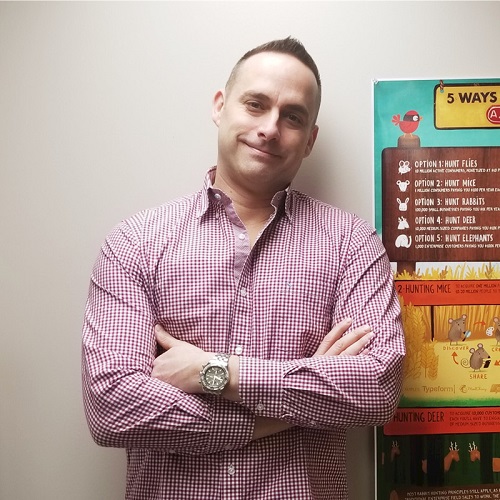There’s an incredible amount of information out there about churn in the world of SaaS. And with good reason.
SaaS businesses spend a lot of money and put a heck of a lot of effort into acquiring new customers and building their user bases.
So, when a customer decides to call it quits, it hurts.
I was recently chatting with our CEO Tyler Eyamie, who has been working in SaaS for two decades. When the topic of churn came up, he shared an important lesson he learned early into his founder journey. It was about the importance of really knowing and focusing on your ideal customer.
When Stax Bill was first getting started—as with all startups—there was a lot of pressure to grow rapidly. And at the time, this led to growing the business by bringing in as many customers as possible as quickly as possible.
But here was Eyamie’s ‘aha’ moment in those early days.
While the business was able to bring in all sorts of customers, it was also churning them out at a higher-than-preferable rate. Why? They weren’t actually a good fit for the product.
This led to a shift in acquisition strategy and a powerful emphasis on targeting best-fit customers rather than just lots of customers. It’s about quality over quantity, because the customers that achieve the most value from your solution are the ones that are far more likely to stick around.
That’s good for your business, and it’s also good for your customers.
This approach to acquiring best-fit customers and dedication to building long-term relationships is still strong at Stax Bill today.
Four more important churn lessons from the SaaS world
So, this got me wondering about the experiences of other SaaS leaders. What important lessons have they learned along the way about customer churn, and how are these lessons helping them grow their businesses?
Better yet, how can we all learn from these lessons to get better at tackling churn?
1. Be proactive about asking users for feedback

“Asking for user feedback in a consistent, timely, rigorous way is so, so critical,” said Jessica Pfeifer, General Manager of Wootric by InMoment.
After co-founding Wootric back in 2013 alongside CEO Deepa Subramanian, Pfeifer scaled the enterprise feedback management platform as its Chief Customer Officer until it was acquired by InMoment early in 2021.
“Customers may have a minor (or major!) annoyance with you, and they won’t necessarily reach out and tell you about it,” she warned. “Don’t rely solely on conversations with clients. You can prevent avoidable churn by being proactive here.”
A few years ago, Pfeifer and her team began asking the Customer Effort Score question: “How easy was it to get started with Wootric?” after their customers completed onboarding.
“In our case, the onboarding milestone is achieved when our customer has survey responses flowing into their Wootric dashboard,” said Pfeifer. “Accounts are far less likely to leave if they set up a successful customer feedback program.”
While some of their customers accomplish this all on their own, larger accounts with more complex implementations also have an onboarding call with a customer success manager.
“Because of those calls, we didn’t necessarily think we would learn much from the survey. After all, the CSM asked for feedback in their conversation with the customer and made sure to answer all of their questions!”
But Pfeifer says she and her team were surprised at the richness of the survey feedback they received.
It never hurts to ask. And being proactive about continually asking for that customer feedback has helped them:
- improve their onboarding training, and
- provide meaningful feedback to their product team on ways to reduce friction/confusion in the product experience.
This meant that as we grew, each new customer had a more easeful and productive onboarding experience—whether they were working with a CSM or jumping into the platform and getting started themselves. More ease translated to more loyalty.”
If you want to avoid surprises when it comes to churn, how and when you ask for feedback matters, said Pfeifer. Being able to immediately remedy issues can turn potential churn cases into customer success stories.
2. Pay attention to customers that are underusing your solution

“The formula is simple,” said Chase Tinkham, founding Customer Success Manager at ChurnZero. “The more [customers] use the solution in the right way, the more likely they are to continue doing business with your organization, expand into new offerings, and advocate for you.”
In other words, it’s time to get back to basics, he said.
Tinkham started in SaaS back in 2011. He recalls a specific meeting he had with his VP and a couple other team members at the time about customers that were underusing the solution. The reality was if they weren’t using it, they weren’t going to renew, he said.
“Customers that are underusing a solution from a feature-functionality standpoint are the most obvious risk.”
When customers come into your business:
- they’ve heard from marketing,
- they’ve spoken with sales, and
- they have a vision about the kinds of challenges your solution is going to solve for them.
“It’s our duty to execute on that vision,” he said. “It’s important to bring them back to the reasons they bought and get them refocused on that solution to deliver on the outcome they were ultimately seeking.”
So why might a customer be underusing a solution they bought into?
Aside from being a workforce that’s generally distracted, another issue is the expectations that are set up front for customers.
Don’t promise customers they’ll be up and running in an hour if it’s going to take 20 hours of training and deployment efforts, said Tinkham.
Be honest about what you can do and can’t do, and then deliver on that.”
Align yourself with the customer and relentlessly show them the value of your solution.
“There’s always going to be churn in your customer base. It’s unavoidable to a certain extent,” he said. “But organizations need to understand they do have control over a lot of their customer churn. It starts with delivering the appropriate customer experience you’ve promised and providing your team with the tools and an investment in resources and time to do that.”
3. Have an organized process for addressing churn

Not every SaaS business has a specific ‘aha’ moment when it comes to reducing churn. For Adeel Raza, Co-Founder and CEO of Mailmunch, it has been about stringing together little wins and tweaking things here and there that have combined to become significant.
“The first thing we did at Mailmunch was we started collecting a reason whenever somebody wanted to downgrade,” he said. “So, on the billing page, you couldn’t cancel the account until you gave us the reason why.”
Raza and his team then clustered those reasons into various buckets, finding there were common explanations for why customers were downgrading or canceling. This organizing process enabled them to address the lowest hanging fruit first.
We started addressing those problems, and I think that was the biggest win for reducing churn,” he said.
The Mailmunch team also started collecting Net Promoter Scores (NPS) and looking at why detractors were scoring them low.
- Some reasons were more generic and could apply to any SaaS solution. For example, at one point the app was generally slow for everyone and people were feeling frustrated, he said. They were able to solve the problem with performance improvements.
- Other reasons were more specific to their app, such as features and functionalities subscribers wished were available.
The business has improved its churn through customer surveys, NPS efforts, and feature-functionality updates, but also by continually engaging its customers.
“We noticed after people upgraded and everything was going smooth, they weren’t coming back to our app to engage with it,” said Raza.
In response, the Mailmunch team started emailing its customers their platform activity for the week.
Even if they didn’t open the email, they saw it in their inbox and in the back of their heads, this was a useful tool that was working in the background for them,” he said.
Many lessons can be learned along the way about managing and reducing churn, but of course, the process is never truly complete.
“We’re still in the process of reducing churn,” said Raza. “I wouldn’t say we’re at the perfect point right now.”
Raza and his team continue to actively address churn by improving their features and working on improving their NPS score. And over the last couple of years, they’ve certainly come a long way, he said.
“I think it’s always going to be a cat and mouse game because with each product improvement, we’re also going into newer markets,” he said. “And when we start acquiring users from those new markets, we’re basically at square one. We will have to start improving the product again.”
4. Remain focused on the right solution for the right customer

This article began with a lesson learned on the importance of good customer fit. Our final SaaS leader’s lesson builds from there.
“Customer churn isn’t just an outcome of lack of features or development. Addressing churn involves having a hyper-focus on your ideal customer throughout the entire customer lifecycle,” said Jonathan Herrick, CEO at email marketing platform Benchmark.
“It starts with having a good product-market fit and then attracting the right customer through marketing. Once you win a new customer, you want to make sure they have all of the resources they need to succeed with your product, so your customer success initiatives need to address churn as well.”
While new features are exciting, customers invest in your product to solve an issue with the features you already have, said Herrick. If you want to avoid filling the top of your funnel just to lose customers every month, your SaaS business needs to shore up its current customer experience.
“One of the decisions we made early on with our all-in-one CRM platform, BenchmarkONE, was to focus on small B2B businesses rather than B2Cs,” he said.
Making that change enabled the business to:
- stop losing customers that wanted functionality the business didn’t cater to
- perfect the features its customers cared about most, and
- leverage the jobs-to-be-done framework to fuel product-led growth.
“At Benchmark Email, for instance, we’re hyper-focused on helping our customers do the one thing they hired us to do—deliver beautiful email newsletters to their audience quickly and easily,” said Herrick. “When everything we do—from marketing to support to development—is based on that goal, we’re able to fulfill our brand promise and attract and retain new customers every month. It’s a recipe for growth.”
Lower churn creates a lower barrier to success for SaaS

“Churn can equate to the end of the world for a SaaS business,” said Eyamie.
While that sounds a little heavy, it’s also a reality.
SaaS businesses grow by building their customer bases and their recurring revenue. But if you’re losing customers as quickly as you’re bringing them in, or even just at a relatively high rate, it’s impossible to achieve that rapid growth.
Businesses need to, “Stop the drips before the floodgates of customer cancellations are thrown open,” he said.
By bringing in the right customers, delivering them the solution and the value they’ve been promised, and continually ensuring they’re happy and engaged, you can work toward optimizing your SaaS business’s churn metric for success.
And of course, continue paying attention to the lessons you’re learning along the way.







